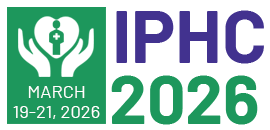Title : Development and validation of a diagnostic nomogram to predict high altitude pulmonary edema
Abstract:
Background: High altitude pulmonary edema (HAPE) are one of the clinical manifestations of acute mountain sickness (AMS). A fatal risk of HAPE has been contribute to a lack of prediction and delayed treatment. This study aimed to establish an effective diagnostic nomogram for HAPE patients.
Methods: A total of 1,255 Han Chinese were included in the study on the Qinghai Tibet Plateau above 3,000 m. They were classified as suffering from severe HAPE or not. The sample was divided in to training and testing datasets by time. The LASSO algorithms applied to formative predictors associated with HAPE based on Akaike's normalization criteria, and established the diagnostic nomogram for HAPE using multivariable logistic regression analysis. This diagnostic nomogram was assessed by the training and testing datasets. The C-statistic and the Hosmer-Lemeshow test were used to assess model performance. P < 0.05 was considered to indicate statistical signi?cance.
Results: The predictive factors including gender, Body mass index (BMI), systolic blood pressure, mean arterial pressure (MAP), white blood cell count (WBC), the percentage of lymphocytes, hematocrit, mean corpuscular volume (MCV), mean corpuscular hemoglobin concentration (MCHC), the platelet count (PC), and mean platelet volume (MPV) were contained in the nomogram. In the training data set (n = 854 ), the C-statistic for predicting the probability of HAPE was 0.786. The C-statistic was 0.817 in testing datasetdata set (n = 391). The nomogram was well calibrated, with a brier score of 0.176 (P = 0.3248) in the testing data set. The confusion matrix was also summarized, and the accuracy was 71.99 and 74.94% in the training and testing dataset, respectively. The nomogram both performed well in terms of discrimination and calibration. Moreover, decision curve were also beneficial for HAPE patients.
Conclusion:The present study has proposed an effective nomogram with potential application in facilitating the individualized prediction of High altitude pulmonary edema.
Audience Take Away Notes:
- The application of this nomogram promotes the individualized prediction of high altitude pulmonary edema in the prevention and treatment of high altitude diseases.
- Our study simplifies the diagnostic process of high altitude pulmonary edema.
- Provide new ideas for establishing disease prediction models for other researchers.



